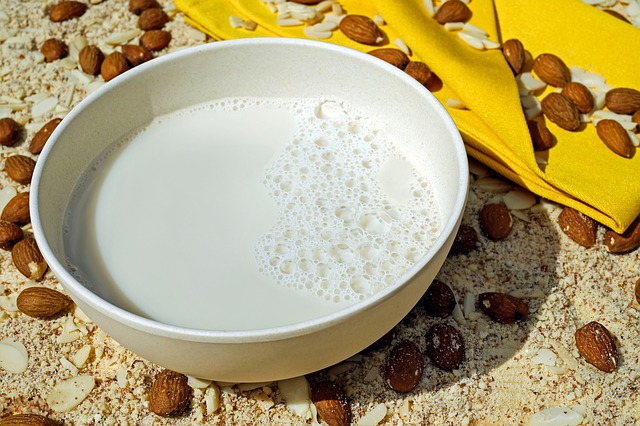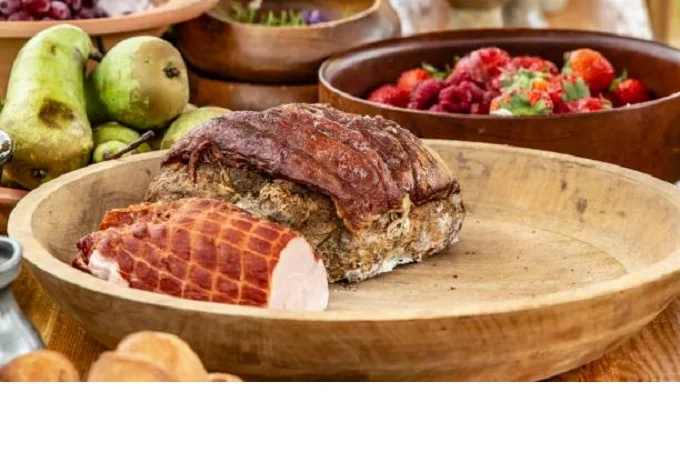When people talk about the Middle Ages, castles, knights, crusades, plague, and unsanitary conditions are most often mentioned. But the everyday life of people is somehow bypassed. Therefore, we want to supplement your knowledge a little about this period of history, or more precisely, about what they ate in those days. Here are some facts you might not know about the medieval diet.
Almond milk was often used

Replacing cow (and any animal) milk with vegetable milk, which is now a tribute to the fashion for vegetarianism and proper nutrition, was common in the Middle Ages. Then milk from almonds or other nuts was prepared for a practical purpose to diversify your diet during fasting when it was forbidden to eat meat and milk of animals.
Therefore, vegetable milk was used for drinking and as a raw material for preparing butter. In addition to the possibility of its use during fasting, such milk had one more advantage – long storage. Unlike animal milk, nut milk did not decompose for a long time. In many cookbooks of the time, it is not uncommon to find this ingredient instead of cow’s milk.
There were fast foods in the Middle Ages
Of course, it was not like modern McDonald’s with students standing at the checkout, shouting “Free Cashier!” And not hamburgers with cola were sold there. Instead, medieval fast food establishments served meat pies, pies, pancakes, waffles, and other dishes well suited for a quick bite.
Like modern fast-food restaurants, medieval establishments had a dubious reputation because their owners, according to historians, could make hot dishes from spoiled meat, add offal to save money, and also give out the less expensive filling, for example, beef, for more expensive ones, such as venison.
The diet of the peasants was high in calories
And this contradicts popular culture, which insists that ordinary people – it doesn’t matter if they were peasants or artisans – were starving terribly. If you do not take certain periods of history, most people in medieval Europe ate from one to one and a half kilograms of bread and other grain dishes a day and drank up to four liters of low-alcohol ale. Wheat, rye, oats, and barley were used for cooking porridge, bread, and other pastries. Of course, meat was rarely present on the table of an ordinary person, but instead, there were peas, lentils, and fish.
For you to understand, one kilogram of rye bread contains almost 2,600 calories, and four liters of ale is another 1,500 calories. In theory, it would be possible to gain extra pounds on such a diet, but this was not allowed to be done by a grueling 12-hour working day without days off.
Nobody made salads
They also did not eat fruits and vegetables raw. And this is the exact opposite of modern fashion, where some people are switching to a raw food diet. In those days, people rarely ate untreated food due to the potential for disease, as fruits and vegetables were rarely washed after harvest.
For example, the Book, written in 1508 and which was a guide to serving and receiving meals during feasts in the great houses of the late Middle Ages, says that one should beware of green salad and raw fruits, as they will bring sickness to a person.
Suckling pig was the counterpart of the lobster
Popular culture often features medieval feasts, where one of the dishes that few people pay attention to is roast pork, whole boar, or suckling pig.
In fact, in the Middle Ages, suckling pig was considered a delicacy like lobster or marbled beef, just like a roasted pig, because they were almost the most important sources of protein and fat in those days.
Almost no one had breakfast
For a modern person, breakfast is considered one of the most important meals. In the Middle Ages, almost no one ate breakfast. For example, the theologian philosopher Thomas Aquinas said that eating too early is one of the ways to commit a mortal sin – gluttony. Breakfast was considered an insult to God and oneself.
More often than not, in order not to break the fast and not to anger God, they skipped breakfast and instead ate a light lunch, and in the evening, they had a hearty dinner. Some also added a so-called back supper when wine or ale was consumed, which discouraged this. The peasants had something like breakfast, but it was usually a small loaf of bread, and you had to eat it to keep yourself from fainting during the work in the fields.
The people ate almost everything they could get their hands-on
If you were a peasant in medieval Europe, you might have seen meat only on the cart that took a pork carcass to the local feudal lord’s castle. So one had to eat not beef and pork or even chicken, but something else which is a source of animal protein.
However, rich people were not picky about food because only after the beginning of the Renaissance did the nobility compete in the high cost of food. And in the Middle Ages, on the tables of both peasants and rich people, one could see starlings, vultures, gulls, cormorants, guinea pigs, seals, whales, hedgehogs, and similar creatures that no one would ever think of cooking in our time.
Beans were one of the main dishes on the table
Nowadays, beans can be found only on the tables of adherents of healthy nutrition or simply lovers of these beans. And in the 10th century, when it and other legumes began to spread throughout Europe, it was real salvation because before that, ordinary people practically did not receive protein.
As a result of the massive cultivation of legumes, peasants could consume more protein, which led to improved health, an increase in life expectancy, and the number of children, which, according to some historians, made it possible to quickly compensate for the population losses after the Justinian plague of the 6th century, as a result of which up to 25 million people.
Desserts were a kind of pause between main courses
Now dessert is a separate dish served at the end of the meal. But in the Middle Ages, feasts included many dishes served simultaneously, and desserts were a kind of pause between them, allowing you to remove the aftertaste and prepare for a new dish.
Of course, we are talking about the wealthier strata of the population and not about the peasants, who, as we said earlier, mainly ate bread.
The medieval diet was good for the heart
Moreover, it was even healthier than modern diets. This is because a person of that era was at a much lower risk of developing coronary heart disease and diabetes. After all, he did not have so much sugar in his diet and did many exercises. Of course, this is about working hard in the field, not about barbell presses in the gym.
Some researchers say the medieval diet is arguably the best nutritional model for modern humans and outperforms even the Mediterranean diet.
